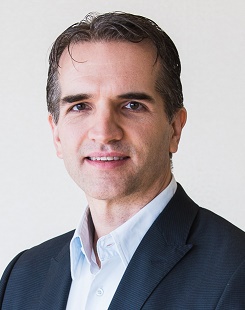Explosive demand for cloud computing sees hundreds of billions of dollars poured into new data centres annually, but generative AI (genAI) is now consuming so much capacity that a recent investment pause has experts warning businesses to plan for cloud capacity shortages.
Concerns emerged in the wake of news that Amazon Web Services (AWS), the world’s largest public cloud operator with 30 per cent of the market, had followed the lead of Microsoft – the second largest, with 21 per cent of the market – in pausing or cancelling plans to add capacity.
Citing “several industry sources,” a Wells Fargo analyst note warned that AWS – which has said it will spend $131 billion ($US85 billion) on new data centres this year alone – had paused discussions about leasing additional data centre capacity, particularly in Europe.
“This is routine capacity management, and there haven’t been any recent fundamental changes in our expansion plans,” Amazon global data centres vice president Kevin Miller wrote to address “speculation” about AWS plans that he attributed to “consider[ing] multiple solutions in parallel.”
“Some options might end up costing too much, while others might not deliver when we need the capacity,” Miller said, adding that “other times, we find that we need more capacity in one location and less in another.”
Microsoft, for its part, has cancelled at least two data centre leases and confirmed that it would be “slowing or pausing some early-stage projects” including a planned $1.5 billion ($US1 billion) Ohio data centre build.
This, just months after Microsoft president of cloud operations and innovation Noelle Walsh noted that the company doubled its data centre capacity in the last three years – “adding more in 2024 than any other year in history” – and would spend over $123 billion ($US80 billion) more this year.
“By nature, any significant new endeavour at this size and scale require agility and refinement as we learn and grow with our customers,” she said, adding that “what this means is that we are slowing or pausing some early-stage projects” and “may strategically pace our plans.”
AI firms are fighting enterprises for space
Throttling back investment in new facilities will pressure the world’s 11,800 existing data centres – a figure that includes 307 sites in Australia and 81 in New Zealand – as cloud giants work to keep up with surging demand for genAI sites that attracted 12.57 billion visits in March alone.
That’s up from 7.74 billion visits in April last year – a 62 per cent jump in visits – and the announcements caused many to fear the consequences given that genAI giants are now fighting large businesses to secure limited capacity in cloud data centres.
IDC, for its part, has predicted worldwide spending on public cloud services will double from 2024 to 2028, growing at 19.4 per cent annually – with the three largest industries, banking, software and information services, and retail, spending $293 billion ($US190 million) last year alone.
"Given the already massive size of the market, we are seeing an impressive surge in growth," Synergy Research Group chief analyst John Dinsdale said in noting full-year cloud infrastructure service revenues of $510 billion ($US330 billion) last year.
“It is undoubtedly AI that is a prime factor behind this increased growth rate,” Dinsdale said, adding that “new AI-oriented services and technology are helping the major cloud providers to ride a wave” that will grow further with the $771 billion ($US500 billion) Stargate AI project.
Shortages on the horizon
Surging demand and surging investment would normally be a match made in heaven, but some are taking AWS and Microsoft’s post-tariff pause as a sign that the companies may have pushed their expensive, fast-growing ‘hyperscale’ data centre architectures too far.
“News that AWS is joining Microsoft in pulling out of new data centres when demand for AI is growing exponentially is testament to the enormous inefficiency this model presents for scaling the global internet,” said Kai Wawrzinek, co-founder of Impossible Cloud Network.
“Despite claims that their reneging on buildouts and leases represent temporary ‘pauses’,” he said, “firms like Microsoft and AWS may be coming to realise that centralised infrastructure models simply can't adapt fast enough…. [and are] struggling to keep up.”
Businesses, universities, government bodies and other organisations – all of which are rebuilding their ICT infrastructure in the cloud – could face outages as they compete with AI giants for increasingly scarce capacity.
Despite perceptions that capacity is “virtually unlimited,” Gartner notes, “unforeseen events have already impacted providers’ ability to deliver cloud capacity…. [their] ability to forecast and manage capacity needs varies [and] available capacity in cloud regions can fluctuate over time.”
GenAI’s growth “has tested the limits of cloud hyperscalers,” the report warns, adding that by 2028, this means that 60 per cent of major cloud users – those spending at least $46 million ($US30 million) per year on cloud services – will experience cloud capacity limitations.
Limitations on available power are another issue, with power shortages set to restrict 40 per cent of AI data centres by 2027 as the demands of high-powered AI CPUs creates what VP analyst Bob Johnson called “an insatiable demand for power that will exceed the ability of utility providers.”
This change, he said, “threatens to disrupt energy availability and lead to shortages, which will limit the growth of new data centres for genAI and other uses from 2026.”










